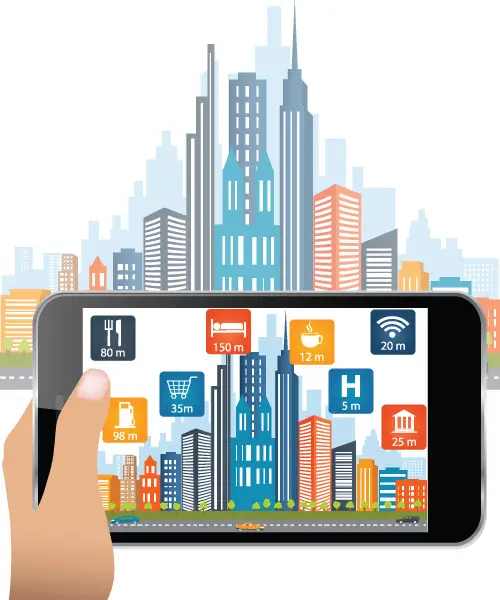“Print is dead” is a phrase you often hear. Truly, many clients are sending shorter runs to their printers than in years past for traditional pieces such as brochures, business cards and calendars. On the other hand, the number of runs has increased for non-traditional pieces like vehicle wraps, wallpaper, and floor mats. The shorter runs are bad for some traditional methods of printing such as web press, but it’s created opportunities for the technology printers use and the products printers can output to evolve. The net result has not reduced, but rather increased, the overall volume of items being produced. To be clear, print is very much not dead.
One new evolution of print that has caught the attention of just about everyone for one reason or another is that of augmented reality, or AR. This new and very exciting form of interaction helps combine both the real and the digital worlds. You may have seen it in the movies, on television, or while watching a clip on the internet. Given enough time, we will all have experienced it in one form or another as we go about our daily lives. AR is catching on fast, and may become commonplace in many everyday activities like shopping, traveling, eating out, visiting companies, and more.
The basic premise of augmented reality is that computer graphics or audio is overlaid onto the real world. Unlike virtual reality where you interact with a whole different computer generated world, with AR, the interactions happen to a person in the real world to enhance their experience. AR can incorporate items, actions and sounds not actually present in the real world, to add excitement, information, comedy or instill emotion. To experience the interaction, one must be viewing the AR activity through a screen that has incorporated an AR application. Many AR experiences can be utilized on a smart phone or tablet.
So how is AR helping generate new demand for the print business? Simply put, the most common backing for AR interactions is printed backdrops. The reason for print being used is its versatility. Almost any surface can be printed on directly or wrapped. Printing also provides precision and replication at an affordable price, which is key for campaigns that happen in more than one location at the same time without breaking the budget. For these reasons and more, the stage for AR interactions is most common on printed surfaces.
Augmented reality has many commercial applications, and can be used to enhance customer experience, tell a company’s story, help build brand loyalty, show upcoming events/products/services, and list static data such as price/product specifications/product history and more. AR pieces can also be sent home via mailing pieces or in printed media such as magazine and newspaper ads. There are a ton of ways to use AR, and almost all of them will help increase more print. As you can see with augmented reality, print continues to adapt and seemingly become more entrenched in our everyday lives. I don’t believe print will ever completely disappear. What new ways will be created to utilize print in the future? Only time will tell, but if it continues to evolve in ways like it has with AR, it will be fun to watch prints continuing evolution unfold.
Thank you for reading this week's Thomas Printworks blog! Contact us today!






